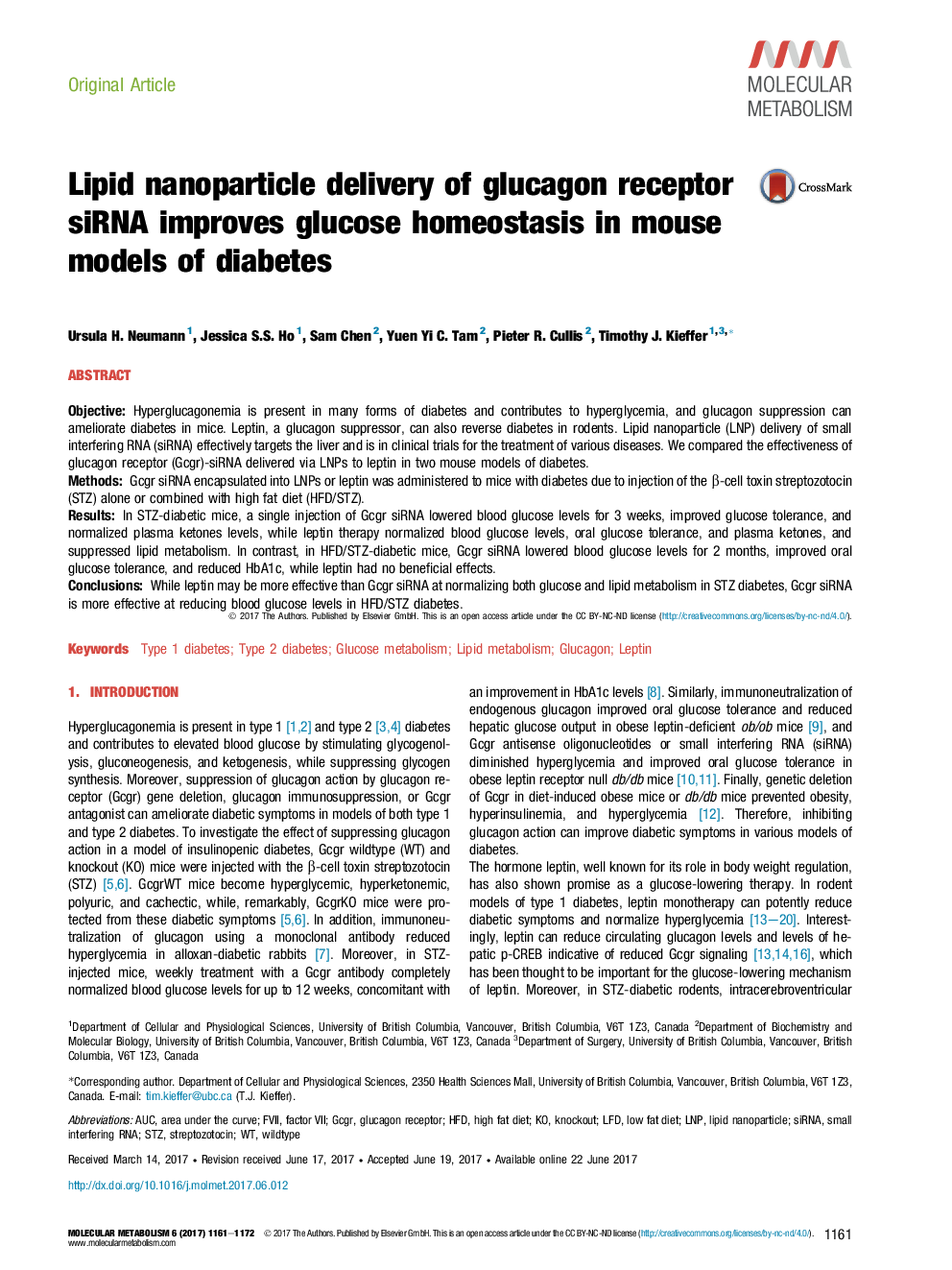| کد مقاله | کد نشریه | سال انتشار | مقاله انگلیسی | نسخه تمام متن |
|---|---|---|---|---|
| 5618634 | 1578870 | 2017 | 12 صفحه PDF | دانلود رایگان |

- Gcgr siRNA improves glucose metabolism but not lipid metabolism in STZ diabetic mice.
- Leptin improves both glucose and lipid metabolism in STZ diabetic mice.
- Gcgr siRNA improves glucose metabolism in HFD/STZ diabetic mice.
- Leptin does not improve glucose metabolism in HFD/STZ diabetic mice.
ObjectiveHyperglucagonemia is present in many forms of diabetes and contributes to hyperglycemia, and glucagon suppression can ameliorate diabetes in mice. Leptin, a glucagon suppressor, can also reverse diabetes in rodents. Lipid nanoparticle (LNP) delivery of small interfering RNA (siRNA) effectively targets the liver and is in clinical trials for the treatment of various diseases. We compared the effectiveness of glucagon receptor (Gcgr)-siRNA delivered via LNPs to leptin in two mouse models of diabetes.MethodsGcgr siRNA encapsulated into LNPs or leptin was administered to mice with diabetes due to injection of the β-cell toxin streptozotocin (STZ) alone or combined with high fat diet (HFD/STZ).ResultsIn STZ-diabetic mice, a single injection of Gcgr siRNA lowered blood glucose levels for 3 weeks, improved glucose tolerance, and normalized plasma ketones levels, while leptin therapy normalized blood glucose levels, oral glucose tolerance, and plasma ketones, and suppressed lipid metabolism. In contrast, in HFD/STZ-diabetic mice, Gcgr siRNA lowered blood glucose levels for 2 months, improved oral glucose tolerance, and reduced HbA1c, while leptin had no beneficial effects.ConclusionsWhile leptin may be more effective than Gcgr siRNA at normalizing both glucose and lipid metabolism in STZ diabetes, Gcgr siRNA is more effective at reducing blood glucose levels in HFD/STZ diabetes.
Journal: Molecular Metabolism - Volume 6, Issue 10, October 2017, Pages 1161-1172